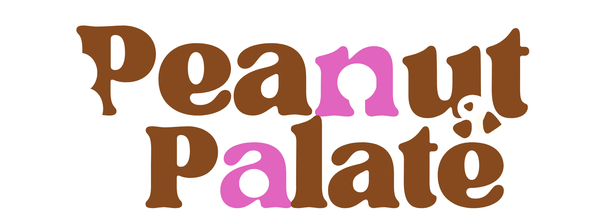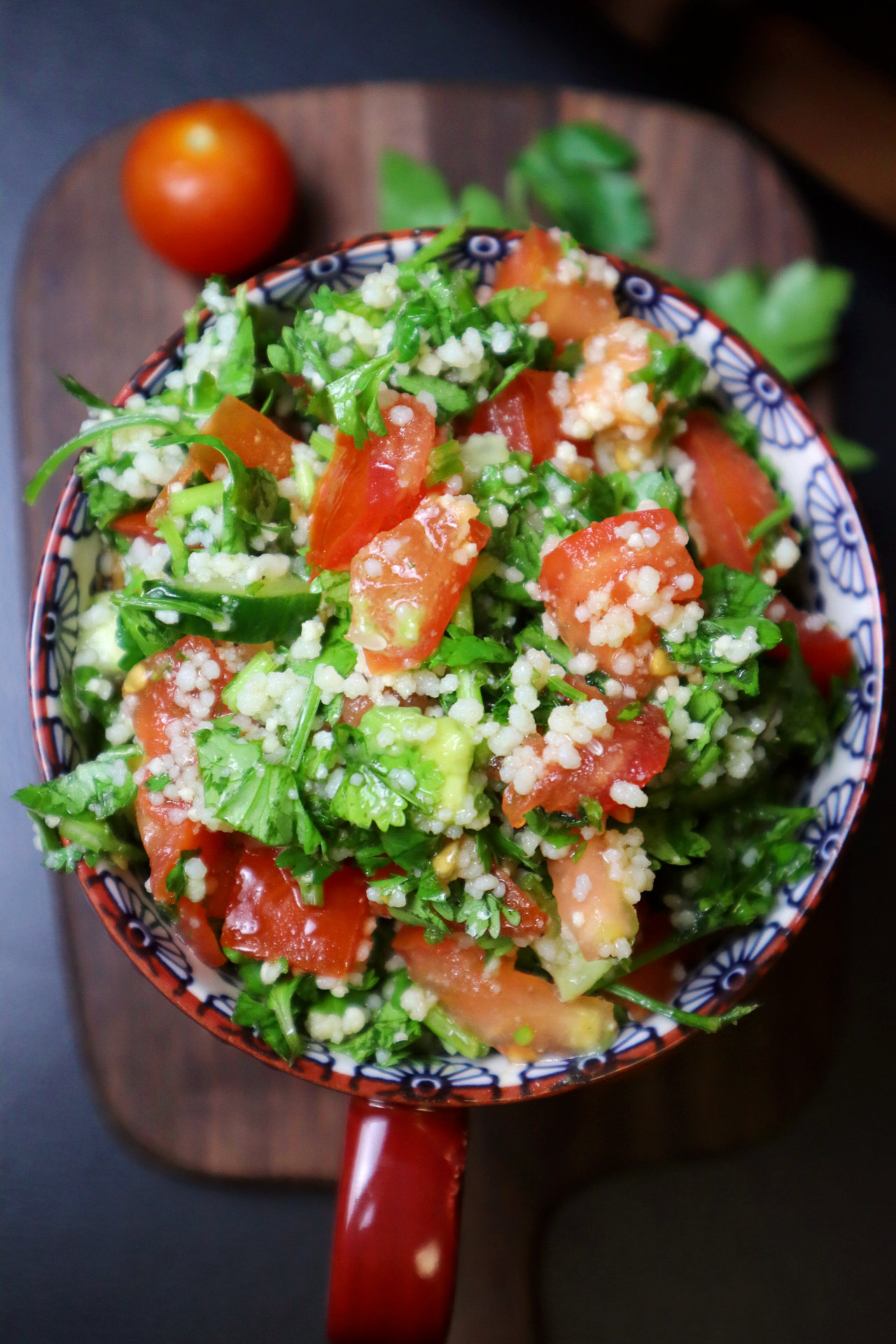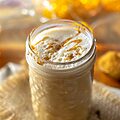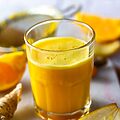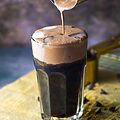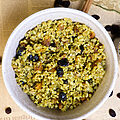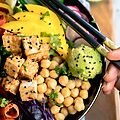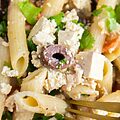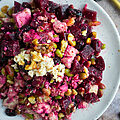Lebanese Tabbouleh Recipe
Today we are making a Lebanese Tabbouleh Recipe! This is also called tabouli and is one of my absolute favorite salads, full of fresh herbs! The word Tabbouleh comes from the Arabic word Taabil, which means “to spice” in English. Although this Middle Eastern salad is now commonly served in Lebanon, it is said to have originated in Ottoman Syria. This has now separated into the countries we know as Syria, Lebanon, Palestine and Jordan.
So this easy recipe is a cold, finely chopped salad full of fresh flavor. Made in the traditional way, the main ingredients are lots of parsley as the base, fresh lemon juice, olive oil dressing, red onion or green onions, diced cucumber, firm tomatoes, cooked bulgur, salt, pepper and sometimes fresh mint leaves.
Bulgur wheat (cracked wheat) is a grain using cracked parboiled groats of different types of wheat. It originated in the Middle East and it is the most popular grain to use in tabbouleh.
There are a lot of variations of tabbouleh, for example the difference between Lebanese and Syrian tabbouleh versus other types (such as Armenian, Turkish and other variations). In Lebanese and Syrian recipes, there is a higher ratio of parsley versus bulgar wheat.
But who decided to dump three bunches of parsley into one salad? There aren’t very specific details online, but the mountains of Lebanon and Syria housed many of the herbs used in this recipe. Hence why it became a staple in their diets some 4000 years ago! You can read a brief history of it at this link.
Why You’ll Love This Lebanese Tabbouleh Recipe
Healthy Side Dish (Full of Greens!): This lemony herb salad makes for a great side dish! Serve it with a meal and eat with pita chips, pile it onto lettuce leaves (to make a “raw” wrap with added veggies!), with falafel or more.
No Special Equipment: All you have to do is boil hot water, leave the couscous in it (it takes five minutes to absorb the water and cook), then mix everything in a bowl and you’re done!
There is no other special equipment for this recipe.
Substitutions
Olive Oil: I used extra-virgin olive oil. The next best substitute to any version of olive oil (if you don’t have regular, virgin or extra-virgin), is avocado oil.
Wheat: Although bulgur is the most common grain used in tabbouleh, I didn’t use it in this recipe. However, you could easily substitute it instead of the couscous. You could also use quinoa, pearl couscous or make it high protein by using cooked brown lentils (red lentils may become too gooey when cooked for this recipe). You can find this in the grains section of most grocery stores or at Middle Eastern grocers.
Tomatoes: You can add pomegranate to this recipe instead of tomatoes (or even use half tomatoes, half pomegranates). They have a bright red color, and add some sweetness. I personally didn’t want to add any sugary fruits into the recipe, because it’s more savory rather than sweet-and-savory.
Couscous: In this particular recipe, I used couscous rather than bulgur. Couscous is like very small pieces of semolina. Both couscous and bulgur are not gluten-free, because they use a base of wheat. To make this gluten free, replace it with a gluten-free bag of couscous (specific brands make this) or with quinoa, which is gluten-free.
Parsley: There are different types of parsley, such as curly or flat-leaf parsley. However, curly parsley will work the best here!
Onions: For the onions, use whichever ones – green onion, red onion or white. I used white onions because they are sweeter, versus other types of onions which are more bitter.
Mint & Cucumbers: Add in some mint if you like, but it’s optional. I also added some cucumber because of the refreshing ~crunch~ in salads.
Troubleshooting
Why is my tabbouleh soggy?
- Make sure to use a paper towel to remove excess water from the parsley before adding to the salad.
- Use a sharp knife to cut the veggies, especially the tomatoes. If the tomatoes are cut with a dull knife, it will press more water out of them. This makes the salad soggy.
More Recipes You’ll Love
Thai Salad Recipe: A cold and crunchy rainbow vegetable salad with carrots, cabbage, cilantro, peanuts and more, all covered in a peanut sauce!
Cold Potato Salad: This is a great summer picnic recipe and uses no mayo. Instead, raw cashews with apple cider vinegar, dijon mustard, lemon juice and garlic salt form the vegan mayo base!
Squash, Pecan and Kale Salad: A fall salad recipe using all the favorite fall flavors – pecans, squash, kale, pumpkin seeds and apples, all coated in a balsamic vinegar, olive oil and fresh orange juice dressing!
Macaroni Avocado Salad: Another cold salad I would bring to a picnic, this recipe is a crowd-pleaser – an avocado sauce with extra virgin olive oil, spinach and garlic covering a salad of corn, tomatoes and macaroni!
Zucchini Noodles (Zoodles): Raw, spiralized zucchini is turned into spaghetti noodles and covered in an avocado, tomato and onion sauce!
If you make this Lebanese Tabbouleh Recipe, then leave a comment and star rating! Don’t forget to tag your photos @peanut_palate on Instagram. Enjoy!
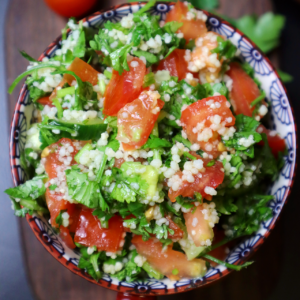
Lebanese Tabbouleh Recipe
Equipment
- Stovetop Pan to cook couscous
Ingredients
- 3 tbsp extra virgin olive oil
- ¼ cup cucumber diced
- ¼ cup white onions diced
- 1¾ cup fresh parsley finely chopped
- 2 large tomatoes diced
- 1½ medium lemons juiced
- ¾ cup cooked couscous
- salt and black pepper to taste
- fresh mint leaves optional, finely chopped
Instructions
- Make sure all the vegetables are straight out of the refrigerator so they are cold.
- Toss all veggies and couscous together in a large bowl or in a salad spinner.
- Once mixed, pour the rest of the ingredients over top and mix again.
- Serve it cold and fresh!
Notes
-
Storage
- Store in an airtight container in the refrigerator for up to two days.
